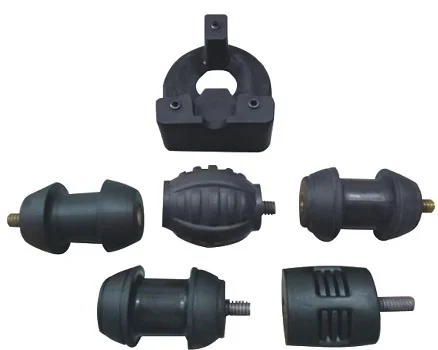כריות גומי או קפיצי מתכת: מה מהם סופג מכה טוב יותר?
בציוד גדול וכבד כמו זה, בלימת מכות היא הכרחית. ציוד כבד בתעשיית הכרייה, התחבורה והבנייה נחשף לרוב לתנאי דרך קשים ועומסים כבדים, מה שגורם לרמות גבוהות של מכה ורטט. במקרים אלו, ההחלטה האם להשתמש בכריות גומי או בקפיצים מתכתיים לדämping הופכת להיות מכרעת. רקע עם מרכז ראשי בשנזןן, KFT מצטיינת בניסיון רב בפתרונות ייצור תעשייתיים, ציוד המשתמש בגומי וסיליקון לצמצום רטט במכונות גדולות.
השוואה בין כריות גומי לבין קפיצי מתכת
פגסי גומי וקפיצי מתכת הם מטילי זעזועים טיפוסיים המשמשים במכונות כבדות. יובן כי הפגסים הגומיים עשויים להיות מסוג ידוע, ועשויים מחומר אלסטי כמו (לדוגמה) סיליקון או גומי המסוגל להתחבר ולצבור אנרגיה למשל upon פגיעה ו/או רעידה. קפיצי מתכת, לעומת זאת, נוצרים בדרך כלל מפלדה או ספישות מתכת אחרות המתאימות שמעניקות קשיחות ודוכסנות לספיגת אנרגיה וחסימת זעזועים. פגסי גומי וכן קפיצי מתכת מבצעים את תפקידי ספיגת האנרגיה, אך קיימים הבדלים משמעותיים הן בהתנהגות והן בתכונות.
פגסי גומי לעומת קפיצי מתכת
לתותבים גומיים וכריות גומי יש הרבה מהיתרונות הבאים בהשוואה לspirals מפלפל. לגומי יש מאפיינים גמישים וניתנים לעיוות, עם יכולת ספיגת אנרגיה גבוהה ובלימת רטט פנימית, מה שיגרום להפעלה בטוחה יותר של ציוד כבד. כריות גומי גם עמידות בפני חלודה, ולכן מתאימות לתנאים קיצוניים. Epdm sheet rubber מציעים יכולת נשיאת עומס מוגברת ועמידות רבה יותר מאשר פגסי גומי, אך עלולים להיחשף לעייפות ול wearing degradation.
ההבדל בין כריות גומי לבין spirals מפלפל במכונות
כריות גומי או spirals מפלפל, מה לבחור? ציוד עם כרית גומי יכול להפיק תועלת מפחות שחיקה, יציבות גדולה יותר וכן נוחות משופרת למשגיח, הודות לספיגת מכות מצוינת בגומי. לעומת זאת, ציוד המבוסס על כריות גומי יכול להיות מתאים יותר להקשרים של עומס גבוה בהם קשיחות ועמידות הן עיקריות, תוך ויתור על תדירות התזמון והחלפה.
השוואה בין קופסאות גומי לקפיצים מתכתיים
לבסוף תלוי בדרישות ובמצבים התפעוליים של המכונה התעשייתית. קופסאות גומי מספקות דämping מעולה של מכות, בידוד רטט ועמידות בפני קורוזיה; בעוד שקפיצים מתקיים מספקים יכולת עיוב גבוהה יותר ועמידות. לוח פם גומי בהתבסס על הידע והמשאבים של חברת Shenzhen Kingfund Technology Co., Ltd. (KFT), יצרנים תעשייתיים יכולים כעת לקבל החלטה מושכלת בנוגע להוספת חומר גומי או סיליקון במיוחד לספיגת מכות במערכות כבדות, ובכך לשפר את האמינות ואת הבטיחות בייצור במגוון רחב של תרחישי עבודה תעשייתיים.

